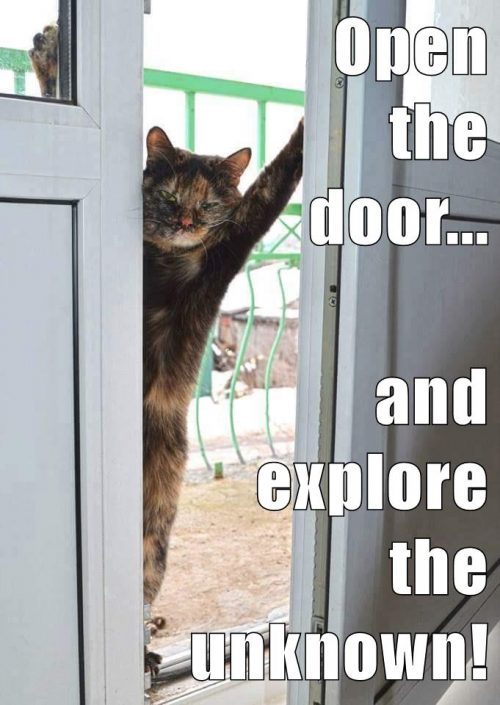As promised, here is another post about the power of Canvas for open, following up on yesterday’s post: Go Open with Canvas. Today I want to focus on OPEN SYLLABUSES.
It’s November, so enrollment for Spring semester is happening right now on my campus, and the students are busily enrolling in classes… without being able to see the syllabuses for those classes. The Faculty Handbook states that faculty must post a syllabus in the LMS. In D2L, alas, that means the syllabuses are closed; there is no open option for syllabuses or for any course content in D2L.
So, instead of enrolling in classes based on the actual content of the classes, students are making choices based on other factors: word of mouth (which is useful, but only so far as it goes), RateMyProfessors.com and similar sites (again, useful, but only so far as it goes), blurbs in the course catalog (brief, generic, and often so out of date as to be worthless)… but they are not using the most important source of information: the syllabus which actually describes the course.
Students NEED to see the syllabus. They need to know what content the course covers and what they can expect to learn. They need to see the required materials, including the cost of those materials. They need to learn something about the instructor’s philosophy of teaching. And, yes, they need to see how grading works in the class (but about grading, I say: #TTOG… more here: Grading.MythFolklore.net).
And they need to know all of that not just after they enroll, but before they enroll. Otherwise, how are they going to make good enrollment decisions?
I’m an LMS minimalist, so I don’t use the LMS to conduct my course, but I am very glad that Canvas can allow us to share syllabuses with prospective students in the open. Canvas even allows faculty members to make the syllabus for a course public even if they decide to keep the rest of the course private:
I’ve always kept my syllabuses and course materials public, so when I started using Canvas this semester, I just posted a link in my Canvas syllabus pages to send students to the relevant materials online, as you can see here: Indian Epics Syllabus and here: Myth-Folklore Syllabus. Each faculty member can use the Canvas syllabus space in the way that works best for them: they can use the Canvas syllabus-building tool, they can upload the syllabus as a document, or they can link to an external syllabus (which is what I chose) — it’s all good.
Open syllabuses would benefit faculty too! We could all learn so much from each other by sharing syllabuses. If OU IT scraped the syllabuses periodically and built a search engine from the scrape, that would be so cool. I would personally love to discover connections by browsing a syllabus index, finding other faculty who use Twitter or blogs, and also finding other faculty who are teaching about India, about Buddhism, about mythology, about storytelling, etc.
Currently, my school is running both D2L and Canvas, but starting next year, it will be all Canvas. I hope very much that faculty will be required not just to post their syllabuses in Canvas, but to do so in the open. If it is not required, I doubt faculty will do it. And since we already do require something of them (i.e. we require them to post syllabus in the LMS), I think it is perfectly reasonable to require them to make the syllabuses public in our new Canvas LMS.
I also hope some resources will be dedicating to integrating that information with our SIS. Long ago, we had a system in which faculty syllabuses (published at our old faculty-staff.ou.edu webspace, now replaced by create.ou.edu) were integrated with our enrollment system (a homegrown system now replaced by Banner): if faculty had activated their webspace, students could get to the faculty member’s web space in a single click. I always posted my syllabuses that way, and I still publish the syllabuses in my own web space, even though it is no longer integrated with the enrollment system. I far prefer students to know what to expect when they enroll in my classes; that’s good for the students, which means it is good for me too. How great it would be if, when students look up a class in the enrollment system, they could get to course syllabuses in a single click!
Does anybody have stories of open syllabuses to share? In particular, an example of Canvas being used as an open syllabus platform for an entire campus? Integrated with the SIS? I would love to find examples of that to share with the administration at my school. We all have so much to gain from that: students and faculty alike!
And, yes, I need examples! I’ve raised the topic of open syllabuses many times with many people at my school, sharing resources like SALSA, etc., but so far, I have seen no commitment to an open syllabus project. I’m not sure if examples of open syllabuses at other schools would make a difference… but it certainly could not hurt.
So… are you taking advantage of Canvas’s open syllabuses at your school? And are the course syllabuses integrated with your SIS? Please share details!
Meanwhile, I am hoping that Canvas will indeed be a step forward for us in creating an open culture of learning at my school: let’s go!
Standing still is not growth. Take a step forward.
Crossposted at OU Canvas Community.


